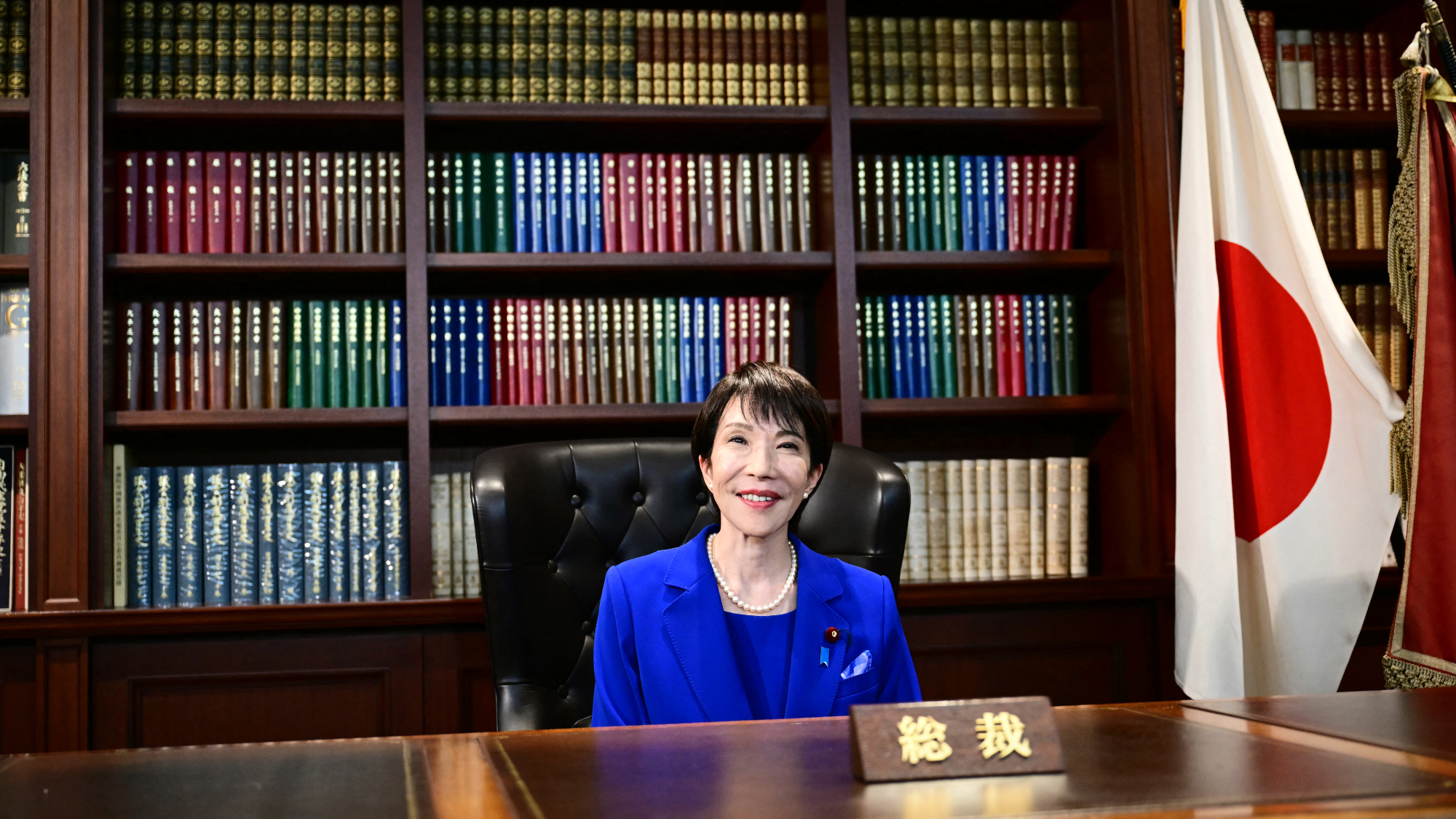Aum Shinrikyo: seven cult members executed over Tokyo subway sarin attack
Cult leader and six followers hanged for role in 1995 terror attack that killed 13

Seven members of a doomsday cult responsible for a sarin nerve gas attack on a Tokyo subway station that killed 13 people have been executed.
Cult leader Shoko Asahara, real name Chizuo Matsumoto, and six other members of Aum Shinrikyo were hanged at a Tokyo detention centre on Friday morning, Japan’s Ministry of Justice confirmed. Six other cult members remain on death row for their role in the 1995 attack.
What was Aum Shinrikyo?
The Week
Escape your echo chamber. Get the facts behind the news, plus analysis from multiple perspectives.

Sign up for The Week's Free Newsletters
From our morning news briefing to a weekly Good News Newsletter, get the best of The Week delivered directly to your inbox.
From our morning news briefing to a weekly Good News Newsletter, get the best of The Week delivered directly to your inbox.
Aum Shinrikyo started life in 1984 as a meditation and and yoga group led by Asahara, developing into a religious movement drawing on Buddhist, Hindu and Christian influences.
The group’s ideology rapidly became increasingly apocalyptic as cult leaders tightened their grip over their followers, with reports of former members and other perceived enemies being kidnapped or murdered.
In 1989, a lawyer working on a class action lawsuit against the cult disappeared, along with his wife and infant son: cult members would later admit to killing them.
By the early 1990s, Aum Shinrikyo had evolved into “a violent cult that sought confrontation with the state as a prelude to the end of civilisation”, says The Guardian.
A free daily email with the biggest news stories of the day – and the best features from TheWeek.com
What happened in the subway attack?
In 1993, Aum Shinrikyo began secretly manufacturing the deadly nerve agent sarin, which they first unleashed in June 1994 in the central Japanese city of Matsumoto, in an attack targeting the homes of judges.
Eight people died in that atrocity, whose perpetrators would remain a mystery until the Tokyo subway attack the following year.
On 20 March 1995, senior cult members released the nerve agent in five crowded train carriages en route to Tokyo’s busy Kasumigaseki subway station during morning rush hour.
Prosecutors at the group’s subsequent criminal trials would claim that Asahara ordered the attack in a bid to divert the attention of the authorities, who were planning a raid on the cult’s headquarters.
Thirteen people died of sarin poisoning, and thousands more became unwell as a result of breathing in the gas.
The massacre “is remembered as a watershed event that deeply damaged a long-held sense of security felt by many in postwar Japan”, says The Japan Times.
Japan marked the 23rd anniversary of the deadly attack earlier this year, with workers at Kasumigaseki Station observing a minute of silence.
-
 Women carrying Christmas
Women carrying ChristmasTalking Point As the Christmas frenzy ramps up, many mums feel the pressure of ‘keeping the whole sleigh on the road’
-
 Is Keir Starmer being hoodwinked by China?
Is Keir Starmer being hoodwinked by China?Today's Big Question PM’s attempt to separate politics and security from trade and business is ‘naïve’
-
 A peek inside Europe’s luxury new sleeper bus
A peek inside Europe’s luxury new sleeper busThe Week Recommends Overnight service with stops across Switzerland and the Netherlands promises a comfortable no-fly adventure
-
 How Bulgaria’s government fell amid mass protests
How Bulgaria’s government fell amid mass protestsThe Explainer The country’s prime minister resigned as part of the fallout
-
 Japan’s Princess Aiko is a national star. Her fans want even more.
Japan’s Princess Aiko is a national star. Her fans want even more.IN THE SPOTLIGHT Fresh off her first solo state visit to Laos, Princess Aiko has become the face of a Japanese royal family facing 21st-century obsolescence
-
 Femicide: Italy’s newest crime
Femicide: Italy’s newest crimeThe Explainer Landmark law to criminalise murder of a woman as an ‘act of hatred’ or ‘subjugation’ but critics say Italy is still deeply patriarchal
-
 Brazil’s Bolsonaro behind bars after appeals run out
Brazil’s Bolsonaro behind bars after appeals run outSpeed Read He will serve 27 years in prison
-
 Americans traveling abroad face renewed criticism in the Trump era
Americans traveling abroad face renewed criticism in the Trump eraThe Explainer Some of Trump’s behavior has Americans being questioned
-
 Nigeria confused by Trump invasion threat
Nigeria confused by Trump invasion threatSpeed Read Trump has claimed the country is persecuting Christians
-
 Sanae Takaichi: Japan’s Iron Lady set to be the country’s first woman prime minister
Sanae Takaichi: Japan’s Iron Lady set to be the country’s first woman prime ministerIn the Spotlight Takaichi is a member of Japan’s conservative, nationalist Liberal Democratic Party
-
 Japan poised to get first woman prime minister
Japan poised to get first woman prime ministerSpeed Read The ruling Liberal Democratic Party elected former Economic Security Minister Sanae Takaichi